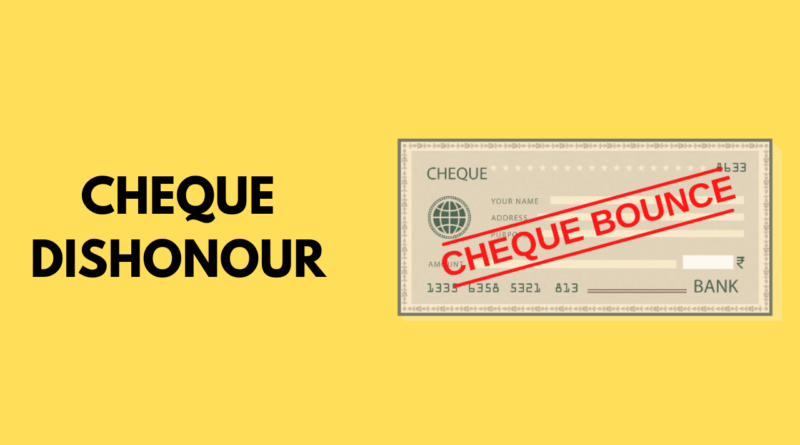HOW TO FILE CHEQUE BOUNCING COMPLAINT ?
Cheques are one of the most popular instruments for making payment of money. Cheques are used in large numbers in commercial transactions. The unfortunate aspect of payment by cheques are that large number of cheques get dishonoured on presentation to bank. To address this situation cheque bouncing has been made an offence under Negotiable Instrument Act, 1881 vide an amendment. Detail procedure of filing complaint in case of cheque bouncing has been provided under the said Act.
Parties in Cheque Bouncing Case
In cheque bouncing case several parties are involved. The person who issues the cheque is called “drawer” of cheque. The Person in whose favour cheque is issued is called “payee” of cheque. The bank on which cheque is drawn is called “drawee”.
Presentation before Bank
The first step is presentation of cheque before the drawee bank. If the cheque is dishonoured due to insufficient amount in account of the issuer/drawer of the cheque, the offence of dishonour of cheque is committed under Section 138 of the Negotiable Instrument Act, 1881. The drawee bank issues return memo alongwith dishonoured cheque providing reasons for bouncing of the cheque.
Legal Notice
The sending of legal notice under Section 138 is compulsory before filing of a compliant. The payee has to send legal notice to drawer of the cheque demanding the cheque amount within 30 days of receipt of return memo. After receipt of the legal notice, fifteen days are available to the drawer to make the payment. If the drawer fails to make payment within fifteen days of receipt of legal notice complaint can be filed against drawer of the cheque.
Filing of Complaint
A complaint has to filed by the payee of the cheque within thirty days of expiry of fifteen days period after receipt of legal notice by the drawer. Such compliant has to be filed before Judicial Magistrate within whose jurisdiction the payee maintains his account. In case of Delhi such complaint has to be filed before Metropolitan Magistrate.
Interim Compensation
The Court under Section 143 A of the Negotiable Instrument Act, 1881 can grant interim compensation to the extent of twenty percent of the cheque amount, which will be payable within sixty days of order. Another thirty days can be given if sufficient cause is shown. If the drawer of the cheque is acquitted, the payee has to repay the amount to the drawer of the cheque with interest at bank rate as published by Reserve Bank of India within sixty days of the order. Such period can be extended by thirty days if sufficient cause is shown.
Punishment
The Court can impose fine on the drawer of the cheque twice the cheque amount or order for imprisonment of drawer of the cheque up to two years.
Offence of Cheque Bouncing Compoundable
The office of cheque bouncing is compoundable under Section 147 of the Negotiable Instruments Act, 1881. The drawer of the cheque and payee of the cheque can enter into settlement anytime during pendency of the trail. The Courts also makes efforts for settlement of cheque dishonour cases.
Liability of a Company for Cheque Bouncing
The company is also an artificial person and can issue a cheque. In case of a company every person who was in charge of company and responsible for conduct of the business of the company are deemed to be guilty of the offence and are liable to be proceeded against and punished accordingly. Any such person can take a defense that offence has been committed without his knowledge or he had exercised all due diligence for preventing commission of such offence.
If it is proved that offence has been committed with consent , connivance or neglect of any director, manager, secretary or other officer, such persons are also deemed to be guilty of that offence and liable to be proceeded.
________________________________________________
Mukesh Kumar Suman is an advocate and legal author based at Delhi. He regularly appears before various Judicial Forums including NCLT, NCLAT, High Courts and the Supreme Court. He can be approached at mukesh_suman@outlook.com or +91 9717864570.


